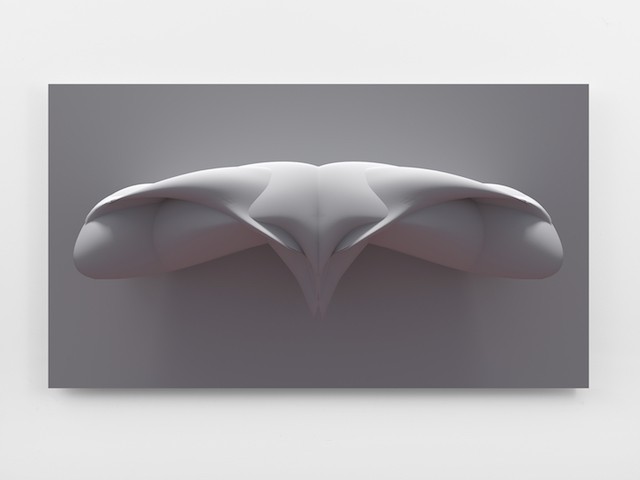Bitforms Gallery Celebrates 15 Years with a Retrospective in San Francisco
by DJ Pangburn
Though media art has been around for more than half a century, its evolving, experimental nature grew from the rise of the internet and the accompanying tech-boom of the late 90s and early 2000s. At the forefront of digital, internet, time-based, and new media art is the New York bitforms gallery. This year, the gallery celebrates its 15th anniversary with a new exhibition located in San Francisco.
The Fifteen-Year Anniversary exhibition is located at Minnesota Street Project and features the work of early bitforms artists like Casey Reas, Daniel Rozin, and Yael Kanarekalongside that of emerging artists like Quayola and Sara Ludy. The robust survey exemplifies the range of media and concepts explored by bitforms gallery artists. The show also seeks to acclimate the art world to the idea of collecting and preserving digital and time-based work.
Highlights include a drawing machine by Tristan Perich, algorithmic digital paintings by Siebren Versteeg, computer-generated drawings from the 70s by Manfred Mohr, and a video compilation of Mark Napier’s net.flag, one of the first internet artworks commissioned by a major institution. The gallery’s atrium is taken over by a Calder-inspired solar-powered sculpture by Bjorn Schuelke and the Wooden Mirror by Daniel Rozin.
The new works on display are an LED wall sculptures by Daniel Canogar, a large-scale interactive work by Rafael Lozano-Hemmer, and a tangled-wire sculpture that intercepts WiFi signals by Addie Wagenknecht.
“While the earliest works in the show date to the beginning of the 70s, works by emerging artists––including Sara Ludy, Jonathan Monaghan, Quayola, and Addie Wagenknecht––showcase how a new generation of artists are engaging with contemporary technology,” Steven Sacks, the founder and owner of bitforms gallery, tells The Creators Project. “In their respective practices, these artists employ Second Life, computer-generated animation (CGI), lidar (light and radar three-dimensional scanning), and drone technologies.”
Sacks was inspired to open bitforms gallery in 2001, after seeing shows like BitStreams at the Whitney Museum, 010101 at the San Francisco Museum of Modern Art, and Digital: Printmaking Now at the Brooklyn Museum.
“Casey Reas, who just had a solo exhibition at [bitforms gallery] in the Lower East Side, is one of the first artists we showed and has been with the gallery the longest,” Sacks says. “Reas writes software to explore emergent systems. His work brings together conceptualism, systems theory, experimental film and animation, and drawing.” Reas, along with Ben Fry, created Processing, an open-source language for learning how to code within the context of the visual arts.
Two of bitform gallery’s other formative works were created by Kanarek and Rafael Lozano-Hemmer. Kanarek’s World of Awe, initiated in 1994 and running through 2006, let viewers travel through an online portal to a parallel world in search of treasure. Lozano-Hemmer’s 33 Questions per Minute used software programmed to recognize grammatical rules to turn words randomly chosen from the dictionary into 55 billion unique questions.
“The automated questions are presented at a rate of 33 per minute—the threshold of legibility—on 21 tiny LCD screens encrusted on support columns in an exhibition hall or mounted on a wall,” Sacks says. “The artwork takes over 3,000 years to ask all possible questions. This is just a fraction of the many memorable shows [presented at bitforms gallery].”
“It’s important for people to see the wide range and history of art and technology and its impact on the art world,” Sacks adds. “Technology has seeped into every aspect of life, much more so than at any other time in history. My artists have a keen sense of this influence and portray it in they works they produce. This connection to modern day culture is the foundation of contemporary art.”
bitform gallery’s Fifteen-Year Anniversary exhibition is on view at Minnesota Street Project in San Francisco from November 5 through December 29.
